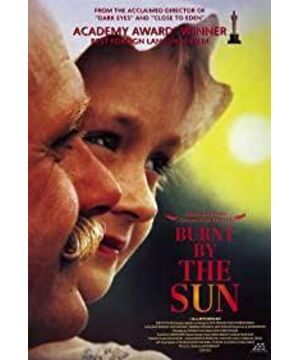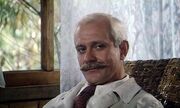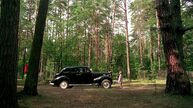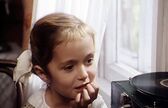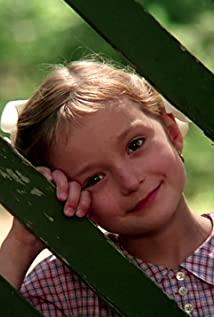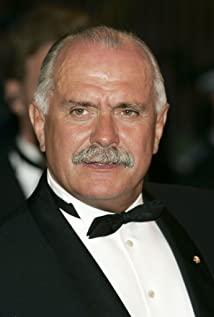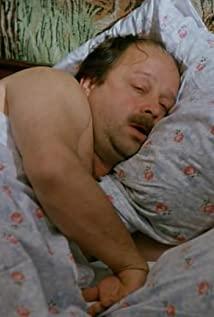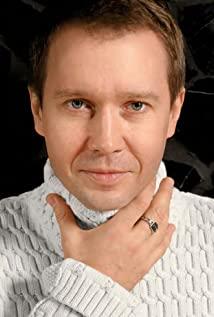Unfinished , there is a follow-up.
For more exchanges, please add Q371798533
The film "Poison Sun" was directed by the famous director Nikita Mikhalkov in 1994. This film is another classic after his "Spirit of Mongolia" in 1991. The film, "Poison Sun", pushed Nikita Mikhalkov's directorial career to the pinnacle.
The story of this film takes place in the former Soviet Union during Stalin's reign. It tells the story of three generations of Colonel Kotov's family, living a happy and peaceful life in an old house. One day, a mysterious figure appeared, this person was Midia who grew up in the old house with Marusa and loved Marusa. Midia was a political policeman at this time, and he came to the old house that he had left for a long time to get revenge. He framed Colonel Kotov as a terrorist and captured Kotov, who was shot but later rehabilitated. Midea also committed suicide with guilt.
There is a well-known song in China - "The East is Red". There is a lyric that reads: The East is red, the sun rises, and China has a Mao Zedong. In a country, the sun is a symbol of party, splendor, justice and power. In the film "Poison Sun", the sun also symbolizes political parties, justice and rights, but there is a word "poison" in front of it. It can be seen that the director has included the theme of the whole film, the poisonous political party, in the title of the film.
Like Nikita Mikhalkov's "Twelve Angry Men: The Great Trial" and "The Horse Pole," the film's narrative pace is slow, and the storyline is bland and has no ups and downs. This is probably the style of director Nikita Mikhalkov. The slow pace is not good for attracting the audience, but it allows the audience to think and judge the subject of the film more objectively, without being subjective.
Red is the most prominent in this film, the red five-pointed star, the red flag, the red scarf, the red cloth on the musical instrument and the big red cloth behind the Stalin photo. The director uses red objects to emphasize the ubiquity of the red regime, the greatness of political parties, and people's beliefs. In stark contrast to the fact that the revolutionary hero Kotov was framed, it made the theme of the poisonous party more prominent and deeper into the hearts of the audience. Especially at the end of the film, the car that arrested Kotov appeared in the same picture with the photo of Stalin from above. In order to be consistent with the title of "Poison Sun", the film chose to shoot in the hot summer with very strong light.
The use of long shots in this film is very good. For example, at the beginning of the film, an elevation lens is used to shoot the red five-pointed star (the red five-pointed star represents the country, political parties and rights). The camera pans down, and groups of heavily armed soldiers walk by neatly, depicting the war and the tense atmosphere. The cleaners on the steps are washing away the dust with water, symbolizing the country's move to sweep away all reactionary forces. A simple long shot expresses so much information incisively and vividly, which can be described as exquisite. Long takes can unify everything depicted in one shot without cutting off time and space, making it easy for the viewer to connect the message being conveyed.
The subjective lens is a very effective means for the director to attract the audience. In the scene where the tank drives into the crop field, there are two use of subjective lenses, one is the commander's point of view to see the opposite instructions through the binoculars, and the other is the pilot's point of view to see the people on the ground. But the roles of these two subjective lenses are different. The former uses the camera to simply replace the commander's glasses to show what he sees, while the latter uses the camera to simulate the special movement state of the characters in the play, so that the audience can experience the character's state at this time, creating an immersive feeling. , to better immerse yourself in the plot. When the plane came, Kotov trotted the scene, and used the camera shake to show the emergency situation at that time. The use of shaking the camera in "Saving the Private Encounter" is very good.
In the dialogue of the characters in the play, the director often uses the front and back shots. The front and back shots are the first used in Hollywood movies, and are gradually adopted by many directors. Front and back shots are good at expressing dialogue, especially two-person dialogue. It can not only show the speaker's facial expressions and upper body movements, but also show the listener's response. However, when the front and back shots are used too much, the audience will be visually fatigued, so many directors will insert some panoramic shots in the front and back dialogues. When the tank was chasing the little boy, and when Kotov ran from the house to the horse, the director used a telephoto lens to make them seem faster, thus accentuating the urgency and evoking the audience's excitement. mood. When Kotov and Nadia were drifting on the wooden boat, the close-up of the father and daughter was close-to-face, and the background was blurred to highlight the subject, and the close-up was used to express their father and daughter's deep love and their good time now. Makes Kotov's death and the broken family all the more deplorable.
The transitions in this film are also quite satisfactory, there are no fancy stunt transitions, which is in line with the deep theme of the film. There was a sound-first transition. When Marusa was swimming to find Midia, Marusa swam out of the screen. At this time, she did not switch the camera, but heard a scream first. This scream, It will make the audience have a certain foresight of the next shot. The audience knows that Marusa is frightened, and then switches to the shot where Midia touches Marusa from the water, so that the transition of the shot is natural and not abrupt.
Unlike dialogue in life, every line in the movie is carefully designed to serve the plot. For example, at the beginning of the film, he had a conversation with his father. The father said: "It's too playful, do you think you are still a childish child?" Responsible behavior lays the groundwork. When Kotov and his daughter Nadia were rafting, they said: "Your feet will always be so smooth, because there will be planes, trains, subways in the future..." This simple sentence expresses Kotov's commitment to the country trust and admiration, as well as the vision for a better life in the future. In contrast to his tragic death, it highlights the theme of the party's toxicity. Too much dialogue is the film's weakness.
View more about Burnt by the Sun reviews


